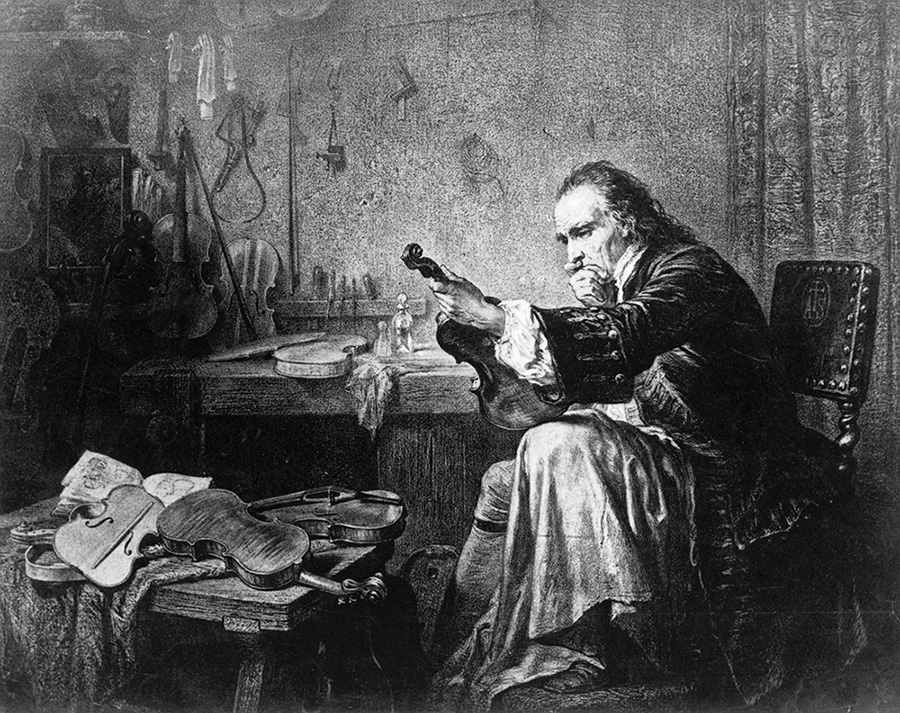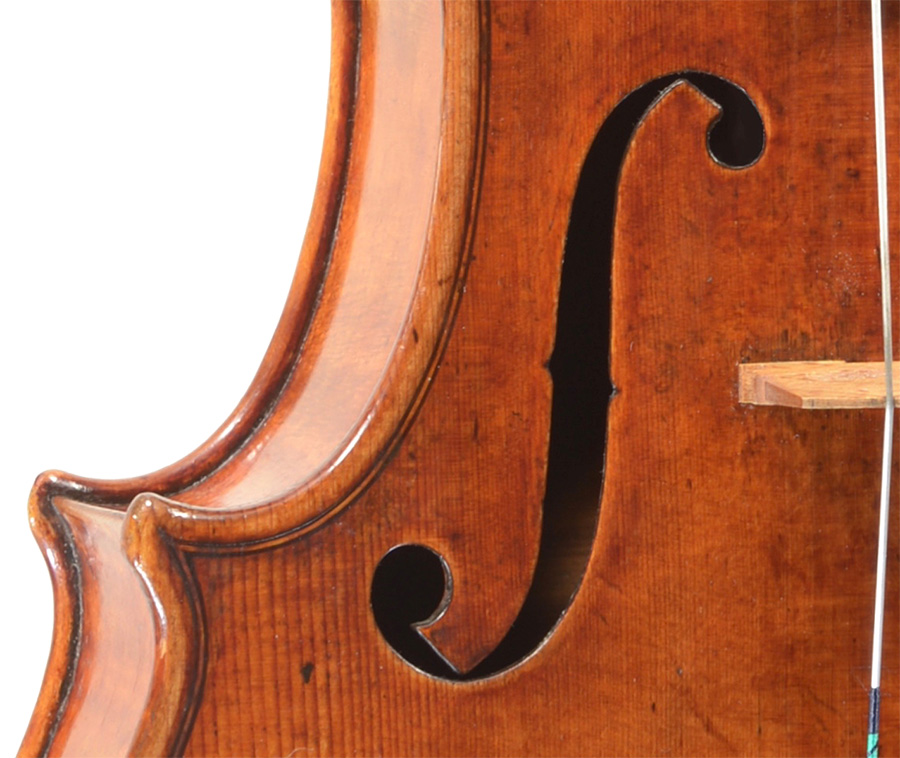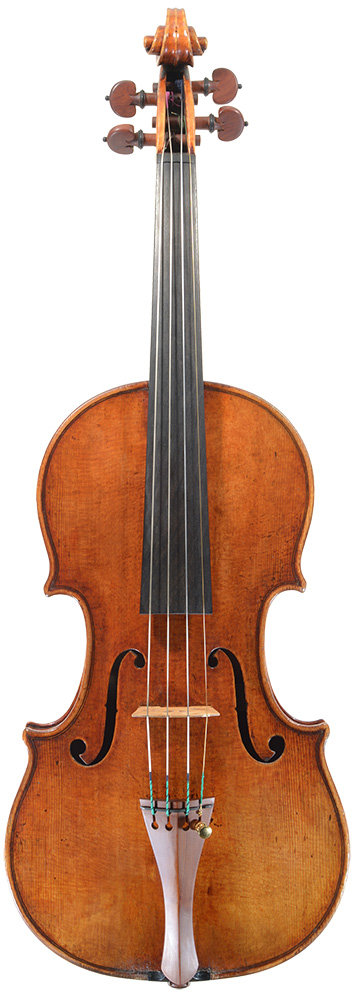|
 Antonio Stradivari (1644-1737) is widely regarded as the greatest maker in the history of stringed instrument making and even after 300 years, no one has been able to surpass the magnificent works that Stradivari has left.
Antonio Stradivari (1644-1737) is widely regarded as the greatest maker in the history of stringed instrument making and even after 300 years, no one has been able to surpass the magnificent works that Stradivari has left.
He has produced more than 1,000 instruments, out of which 600 are said to still exist today, and they can roughly be divided into four different periods: the “Amati” Period (1666-1689), the “Long Pattern” Period (1690-1699), the “Golden” Period (1700-1725), and the “Late” Period (1726-1737).
In fact, Stradivari’s method of making slightly differed from that of Amati, his son Girolamo Amati II or the Guarneri family, who were Amati’s pupils, and Stradivari had never made any instrument with the “Grand Pattern”, which Amati is most famous for.
Although Stradivari’s instruments during the 1670’s were mostly smaller in size, but because they retained the “Amati” model and are greatly inspired by Amati’s instruments, the works produced during this period are called the “Amati” Period instruments.
 At this time already, Stradivarius mastered his knife skills creating beautiful purfling and edges, and was exhibiting his prodigious talent in numerous works full of artistry, showing his technique not only as a woodcarver but a draughtsman leaving artistic inlays on instruments.
At this time already, Stradivarius mastered his knife skills creating beautiful purfling and edges, and was exhibiting his prodigious talent in numerous works full of artistry, showing his technique not only as a woodcarver but a draughtsman leaving artistic inlays on instruments.
Because Stradivari was making cellos of bigger models while the other makers at the time, including Amati, were making smaller ones, Stradivari was clearly not a conformist nor a beloved apprentice of Amati’s. From around the time Amati passed away in 1684, Stradivari’s violin size starts to get bigger, which sees the start of Stradivari’s efforts to make the violin a sounding instrument and not just a woodwork.
Stradivari seeked improvement by selecting elegant slab cut woods for the backs, but because many instruments’ arch tended to be very round and high, they produced beautiful tones but lacked in powerful projection. Despite this, his knife skills was none other than superb at this time and had already perfected his golden ratio in perfecting beautiful instruments.
 In the 1960s, he came up with a new form known as the “Long Pattern”, which has a body length of more than 360mm, to further develop the sound production of the violin. Many of them, however, ended up with the lower register being too fat like the violas and lost the brilliant high register that a soprano instrument should have. In order to correct this dilemma, he experimented in many ways for more than ten years, including making the body slimmer to decrease the instrument’s volume or lowering the arch, and finally established the most ideal body size to be 355mm(}2mm) - and today, even after 300 years, the size has not changed.
In the 1960s, he came up with a new form known as the “Long Pattern”, which has a body length of more than 360mm, to further develop the sound production of the violin. Many of them, however, ended up with the lower register being too fat like the violas and lost the brilliant high register that a soprano instrument should have. In order to correct this dilemma, he experimented in many ways for more than ten years, including making the body slimmer to decrease the instrument’s volume or lowering the arch, and finally established the most ideal body size to be 355mm(}2mm) - and today, even after 300 years, the size has not changed.
The stringed instrument known as the violin was invented by Andrea Amati and its dimensions were perfected by Stradivari.
The “Golden” Period starts in 1700 but Stradivari further advanced towards the Golden period of the “Golden” Period from 1707 onwards. He succeeded in perfecting the perfect ratio for combining a beautiful tone and powerful projection by widening the body and making the arch at a medium height, flattening the top to make a trapezoidal shape. Moreover, by making the ribs a bit higher, he accomplished in obtaining brilliance in the high register and richness in the lower register of the instrument, which of course contributed to the birth of the *‘Form B’ cello after 1707. After this period, Stradivari went onto produce some of the finest instruments in history with the perfected model of all time. These instruments are indeed the Golden instruments form the “Golden” Period.
After 1720 is known as the mature period of the “Golden” Period, during which Stradivari used the finest woods called the ‘oppio’ from his local area. He was already 76 and with many aspiring young apprentices working in his workshop at this time, it is most probable that the preparatory works were done by the apprentices, but the excellence in the final works did not diminish. Many of the instruments possessed a dignified presence with his unique bright red varnish on top of the golden undercoating.
During the “Late” Period after 1725, many instruments were made in collaboration with his eldest son Francesco (1671-1743), his youngest son Omobono (1679-1742) and his apprentices. It proves quite difficult to ascertain if the instruments were actually made by his apprentices or not as Stradivari’s characteristics are strongly felt in the details. Naturally, the instruments from this period lack the overwhelming beauty and the compelling craftsmanship compared to those from the “Golden” Period, but definitely exude astringency and depth which make it captivating for many.
The history of Stradivari family instruments came to an end with the death of Antonio Stradivari on 18 December 1737 at the age of 93, followed by Omobono five years later and by Francesco the year after in 1743.
The 1701 ‘Ex-Markees’ Stradivari violin introduced here has a slightly longer body length of 357mm reminiscent of the instruments during the “Long Pattern” Period, with a slightly lower arch of the “Amati” Period and a wider body, making it the perfect representation of his works from the early years of his “Golden” Period. With the noble and elegant harmonic overtones, characteristic of the “Amati” Period instruments, and the combination of gloriously brilliant tone in the high register and the powerfully deep lower register, known as the “Diamond Tone”, this work is one of the best examples of his finest works as a result of much hard work and discipline over many years. The instrument is named after its first listed owner Karl Markees, who was a pupil of the renowned Hungarian violinist Joseph Joachim.
*‘Form B’ : It is one of the models for cellos that Stradivari developed and is the ultimate mould for a perfect sized instrument.
| |

